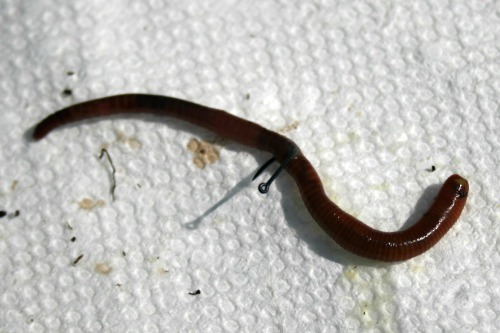Boost Your Fishing Success with Red Wiggler Express Worms
Boost Your Fishing Success with Red Wiggler Express Worms
Blog Article
Red Wigglers: The Unsung Heroes of Organic Waste Recycling
Red wigglers, or Eisenia fetida, act as crucial representatives in the natural waste recycling process, changing discarded materials right into useful vermicompost. Their effective break down of natural matter not only boosts soil high quality however additionally adds to lasting waste monitoring techniques. As the globe progressively looks for options to fight waste buildup and improve farming performance, understanding the duty of these worms comes to be essential. What systems allow them to grow in compost settings, and how can they be efficiently used in both residential and business settings? Exploring these concerns reveals the wider implications of vermicomposting in our eco-friendly landscape.
What Are Red Wigglers?
The exceptional durability of red wigglers, scientifically called Eisenia fetida, underscores their important role in organic waste recycling. These little, reddish-brown earthworms are generally discovered in disintegrating raw material, such as compost stacks and manure stacks. Lake Hickory Bait. Unlike various other earthworm types, red wigglers grow in nutrient-rich atmospheres and are very efficient at damaging down natural materials, making them important for vermicomposting

(Red Wiggler Express)Along with their role in waste decrease, red wigglers contribute to dirt wellness by improving dirt framework and aeration through their tunneling activities (Lake Hickory Bait). Their visibility in composting systems not just enhances decomposition rates yet additionally advertises a sustainable approach to squander monitoring, showing their value in ecological conservation efforts
Benefits of Composting With Worms
Composting with worms, especially red wigglers, uses many advantages that improve both waste management and dirt wellness. These worms efficiently break down natural waste, converting it into nutrient-rich vermicompost that enhances dirt. This process accelerates decomposition, permitting a much faster recycling of kitchen scraps and other natural materials contrasted to standard composting techniques.
Furthermore, the vermicompost generated by red wigglers is including valuable bacteria, which aid boost soil framework, oygenation, and dampness retention. This enhances the total health and wellness of plants, advertising energetic growth and enhanced yields in gardens and agricultural settings. In addition, making use of worms in composting decreases the manufacturing of greenhouse gases, such as methane, adding to an extra sustainable waste management system.

Exactly How to Start Vermicomposting
Developing a vermicomposting system is an uncomplicated process that can produce substantial benefits for both waste administration and dirt enrichment. To start, choose a suitable container, such as a plastic bin or wood box, with appropriate ventilation openings to make certain proper airflow. The measurements must preferably be around 2 feet by 3 feet, enabling sufficient room for the worms to prosper.
Following, prepare bedding product, which can include shredded paper, cardboard, or coconut coir. This bed linen must be moistened to produce an appropriate environment for the worms. As soon as the bed linens is in place, present red wigglers (Eisenia fetida) into the container, generally around one pound of worms for each square foot of surface area.
Adhering to the positioning of worms, include natural waste, such as fruit and vegetable scraps, coffee premises, and crushed eggshells. With these actions, you will efficiently start a vermicomposting system that contributes to sustainable waste administration and improves your soil.
Keeping a Healthy And Balanced Worm Bin
(Red Wiggler Express)Maintaining a worm bin flourishing needs normal attention and care to make sure the health of the red wigglers and the effectiveness of the composting procedure. Proper maintenance begins with monitoring the dampness degrees; the bin ought to be wet yet not saturated. A great general rule is to maintain an uniformity similar to a wrung-out sponge.
Delicately blending the bed linen and food scraps every couple of weeks stops compaction and guarantees that all worms have access to oxygen. In addition, it is important to feed the worms suitably.
Temperature law is an additional crucial aspect. Red wigglers thrive in a series of 55 to 77 levels Fahrenheit. If the container ends up being too warm or cold, the worms may end up being stressed - Lake Hickory Bait. Regularly inspect for indications of health, such as worm population growth and the presence of healthy and balanced castings. By vigilantly managing these factors, one can maintain a durable and efficient worm container.
Impact on Lasting Living
The successful upkeep of a worm bin not just profits the health of red wigglers however additionally adds substantially to lasting living techniques. By reusing organic waste, such as kitchen area scraps and backyard particles, red wigglers aid divert considerable amounts of product from landfills. This decrease in waste not just decreases greenhouse gas exhausts but also lessens the ecological burden linked with waste administration.
In addition, the spreadings produced by red wigglers function as a nutrient-rich organic plant food, improving soil wellness and advertising plant development. This all-natural option to chemical plant foods supports lasting farming and gardening practices, lowering reliance on synthetic inputs that can harm ecosystems. Furthermore, worm composting fosters recognition of waste monitoring, encouraging people and communities to take on even more sustainable practices.

Conclusion
In recap, red wigglers act as important factors to organic waste recycling via their efficient decay of organic products. Their ability to create nutrient-rich vermicompost boosts dirt wellness and supports sustainable agricultural techniques. By integrating vermicomposting right into waste monitoring techniques, individuals and areas can dramatically like this decrease waste while advertising environmental sustainability. The function of Eisenia fetida in cultivating healthy communities highlights the significance of these microorganisms in achieving sustainable living and boosting dirt fertility.
Report this page